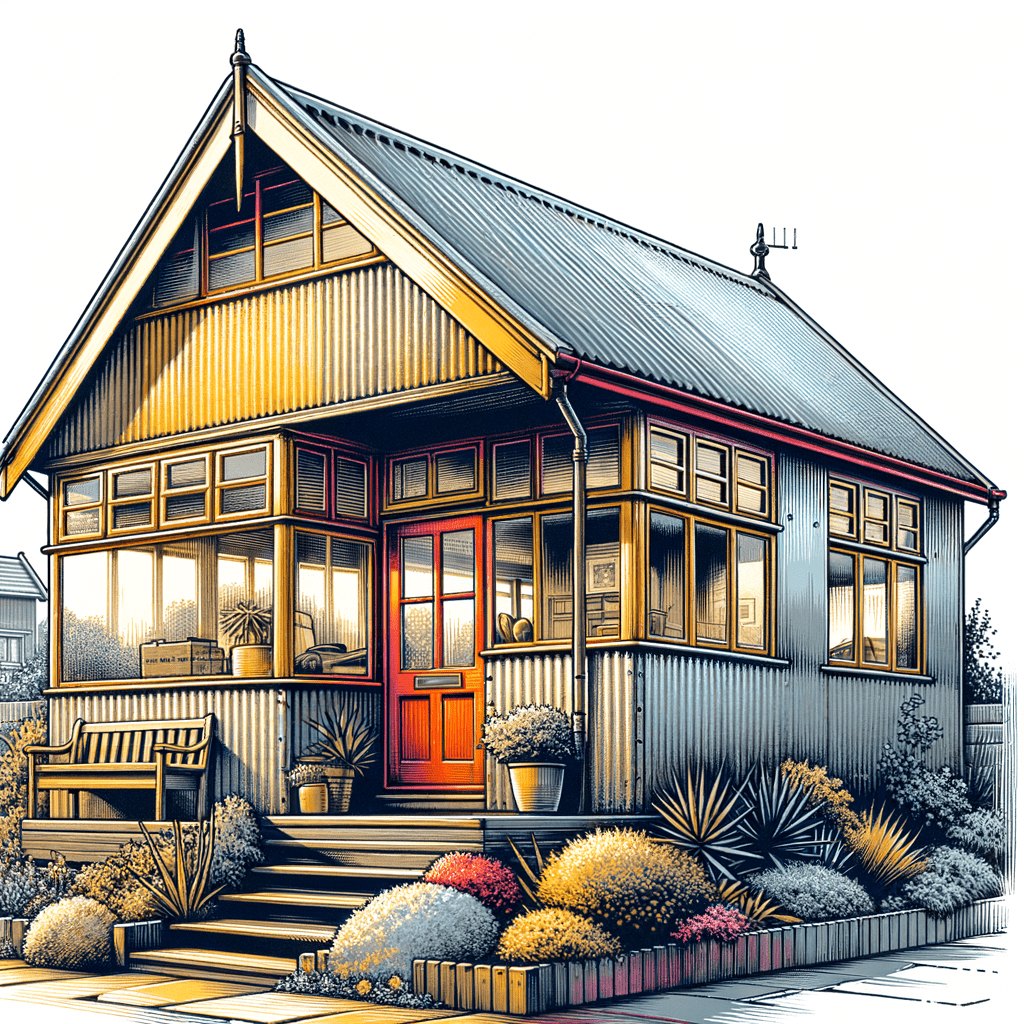The Spooner Temporary Bungalow: A Comprehensive Guide for Home Buyers and Investors
Understanding the Spooner Temporary Bungalow
The Spooner Temporary Bungalow, often referred to as the Spooner Mk III or simply a prefab, is a unique piece of British architectural history. These bungalows were manufactured by Spooner Ltd in the 1940s, a period marked by a pressing need for rapid housing solutions post-World War II. Approximately 2,000 of these structures were built, primarily to address the housing shortage faced by returning servicemen and their families. These homes are typically found in various parts of the UK, often in areas that experienced significant wartime destruction.
Manufacturers and Designers
Spooner Ltd, the manufacturer behind these bungalows, was a key player in the post-war housing boom. The company was tasked with creating affordable, quickly assembled homes that could provide immediate shelter. The design of these bungalows was a collaborative effort, drawing on the expertise of architects and engineers who understood the need for efficiency and durability in construction.
Characteristics of the Spooner Temporary Bungalow
The Spooner Temporary Bungalow is characterized by its distinctive construction and design features. These homes are typically detached or semi-detached bungalows with a shallow pitch gable roof covered with profiled metal sheets. The external walls are made of steel sheets, and the windows are framed with metal. A metal cowl tops the chimney, adding to the bungalow’s industrial aesthetic.
Typical Hazards and Risks
While the Spooner Temporary Bungalow represents an innovative solution to post-war housing needs, it also comes with certain hazards and risks. The use of metal and steel in construction, while durable, can lead to issues such as corrosion and rust over time. Additionally, the insulation materials used, such as slag wool, may not meet modern energy efficiency standards, potentially leading to higher heating costs.
Defective Premises Act Considerations
The Spooner Temporary Bungalow is not classed as defective under the Defective Premises Act. However, potential buyers should be aware that these homes may require significant maintenance and upgrades to meet current building standards. It is crucial to conduct a thorough inspection to identify any structural issues or necessary repairs.
Inspection Tips for Surveyors
When inspecting a Spooner Temporary Bungalow, surveyors should pay close attention to several key areas:
- Roof: Check for signs of rust or corrosion on the metal sheets and ensure that the timber trusses and steel purlins are in good condition.
- Walls: Inspect the steel sheets for any signs of damage or wear. Ensure that the timber frame panels are intact and that the insulation is effective.
- Floors: Examine the tongue and groove boarding on timber joists for any signs of rot or damage.
- Windows and Chimney: Ensure that the metal window frames are secure and that the chimney cowl is free from rust.
Typical Construction Details
The construction of the Spooner Temporary Bungalow is a testament to the ingenuity of its time. The substructure consists of concrete strip footings and concrete under-building, with a damp-proof course (DPC) to prevent moisture ingress. The external walls are made of storey-height timber frame panels clad with steel sheets and lined with resin-bonded plywood, backed with bituminous paper in the kitchen and bathroom. Slag wool insulation is used between the frame studs to provide thermal protection.
Variants and Modifications
Over the years, some Spooner Temporary Bungalows have undergone modifications to improve their functionality and appearance. Common variants include brick underbuilding and external walls lined with plasterboard. These modifications can enhance the bungalow’s thermal performance and aesthetic appeal, making them more attractive to modern buyers.
Common Defects in Spooner Temporary Bungalows
Despite their historical significance, Spooner Temporary Bungalows are not without their flaws. Common defects include:
- Corrosion: The metal components, particularly the roof and window frames, are prone to rust and corrosion, which can compromise the structural integrity of the home.
- Insulation Issues: The original slag wool insulation may not provide adequate thermal protection, leading to higher energy bills.
- Timber Decay: The timber frame and joists can suffer from rot and decay, especially if exposed to moisture over time.
- Dampness: The use of bituminous paper in the kitchen and bathroom may not be sufficient to prevent dampness, leading to potential mould growth.
Preserving the Spooner Temporary Bungalow
For those interested in preserving the Spooner Temporary Bungalow, several steps can be taken to maintain its historical integrity while ensuring modern comfort:
- Regular Maintenance: Conduct regular inspections and maintenance to address any signs of wear or damage promptly.
- Upgraded Insulation: Consider upgrading the insulation to modern standards to improve energy efficiency and reduce heating costs.
- Corrosion Protection: Apply protective coatings to metal components to prevent rust and corrosion.
- Moisture Control: Ensure that the DPC is intact and consider additional moisture control measures to prevent dampness and mould growth.
The Future of Spooner Temporary Bungalows
As we move further into the 21st century, the Spooner Temporary Bungalow remains a symbol of resilience and innovation. While these homes may require significant maintenance and upgrades, they offer a unique opportunity for buyers and investors to own a piece of history. With careful preservation and modern enhancements, these bungalows can continue to provide comfortable and affordable housing for years to come.
At Flettons, we’re committed to safeguarding your investment. When considering a property purchase, trust our seasoned expertise to reveal any hidden threats. For a thorough building survey, get your instant quote through our quote calculator or reach out directly at 0203 691 0451. Your home’s safety is our top priority.

